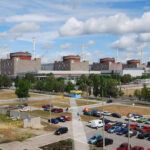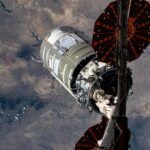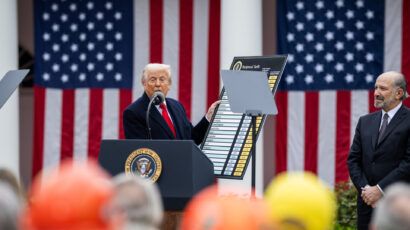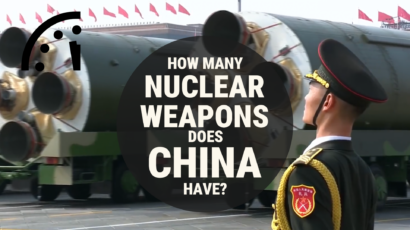Has South Korea renounced “nuclear hedging”?
By Lami Kim | June 27, 2017
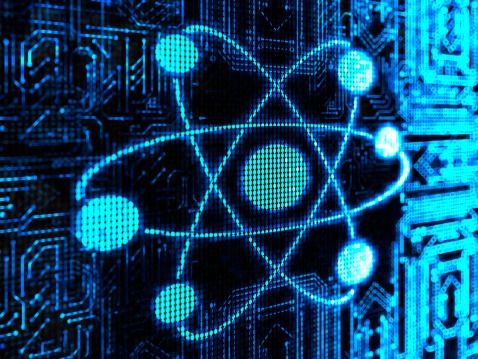
South Korea’s freshly inaugurated President Moon Jae-in seems committed to phasing out nuclear power. During his campaign, he promised to close operating nuclear plants, suspend construction of two nuclear reactors (Shin Kori No. 5 and Shin Kori No. 6, which are about 30 percent complete), and scrap plans to construct eight additional nuclear power plants—with a goal of cutting the country’s 25 nuclear reactors to zero over the next 40 years. He also pledged to reconsider the research program on pyroprocessing technology to recycle nuclear spent fuel, which was launched in 1997 to mitigate the country’s nuclear waste problem. A little over a month into his presidency, on June 18, Moon permanently shut down the country’s oldest nuclear reactor, Kori No. 1.
The nonproliferation community may hail the Moon administration’s nuclear-free energy policy, as some view South Korea as a potential nuclear weapons aspirant given the nuclear weapons tests and threats coming from its northern neighbor. The nonproliferation community has been concerned about pressure in South Korea to acquire nuclear weapons for many decades, because a nuclear weapons development program was initiated in the 1970s, because South Korean public opinion has recently run in favor of nuclear weapons, and because the government has stated its intentions to acquire enrichment and reprocessing capabilities. South Korea is the world’s fifth largest nuclear electricity producer, generating more than 30 percent of its electricity with nuclear power. Furthermore, joint US-South Korean research may or may not prove the effectiveness of pyroprocessing, but doubts about the motivations for exploring this technique continue to spur proliferation concern. Seoul has argued that pyroprocessing is proliferation-resistant because—unlike the conventional reprocessing method of separating uranium and plutonium from spent fuel, which is used in countries such as France and India but not South Korea—pyroprocessing extracts a mixture of all fissionable materials. However, experts argue that pyroprocessing is only slightly more proliferation-resistant than the conventional method, and not proliferation-proof. Moon’s promise to reconsider the pyroprocessing program and to phase out nuclear power may send a signal that Seoul is no longer pursuing a strategy of “nuclear hedging” that lies somewhere between nuclear pursuit and nuclear rollback, and is instead abandoning any future capacity to build nuclear weapons.
However, a somewhat conflicting signal is coming out of South Korea: Moon’s pursuit of nuclear-powered submarines. Last August, North Korea celebrated its first successful submarine-launched ballistic missile, which flew about 300 miles from the eastern port of Sinpo toward Japan. Against this backdrop, then-candidate Moon argued during the April 27 presidential debate that South Korea should build nuclear-powered submarines to counter North Korea’s submarine-launched ballistic missile capability. The rationale is that nuclear-powered submarines, which can stay underwater longer than diesel-electric submarines, are less vulnerable to detection and thus more capable of finding and destroying North Korea’s nuclear-armed submarines stealthily. However, even if nuclear-powered submarines could provide such military utility, the development of enrichment capability for fueling nuclear submarines could also make it easier for South Korea to build nuclear weapons. So is South Korea’s pursuit of nuclear submarines a hedging strategy?
Past ambition for nuclear submarines. This is not the first South Korean flirtation with nuclear-powered submarines. Amid heightened tension in the Korean peninsula after North Korea withdrew from the Nuclear Non-Proliferation Treaty (NPT) in January 2003, South Korean president Roh Moo-hyun approved a nuclear submarine program based on recommendations from the country’s navy. This plan was named the “362 project,” after the date that the project was approved: June 2, 2003. However, the plan came to an abrupt halt in 2004, after South Korea disclosed its past nuclear research activities to the International Atomic Energy Agency, including a secret enrichment experiment in which several South Korean scientists had extracted 0.2 grams of uranium a few years earlier. Although this experiment was unrelated to the 362 project, mounting suspicion over South Korea’s ambition to build nuclear weapons led Roh to abandon the project. A close aide and a longtime friend of Roh, Moon seems to have the desire to revive Roh’s policies, including his pursuit of nuclear submarines.
While it is uncertain whether Moon has such intentions, acquiring the ability to build nuclear submarines indigenously would also make it possible to build nuclear weapons quickly, as mentioned above. To produce nuclear submarine fuel, South Korea needs enrichment technology. Both France and China use low-enriched uranium fuel (enriched to roughly 5 percent uranium 235), but the United States, United Kingdom, Russia, and India use higher enrichments, including up to weapons-grade. Although low-enriched uranium cannot be used for nuclear weapons, which require uranium enriched to at least 90 percent, the same technology can be used to produce highly enriched uranium. Adding to the worry, nuclear materials used in nuclear submarines are not subject to international safeguards; this is often considered to be a serious loophole in the NPT. The fear is that South Korea may try to divert naval reactor fuels to produce nuclear weapons covertly.
South Korea’s ambition to develop nuclear-powered submarines seems feasible. In light of its advanced nuclear technology, experts believe that South Korea has the capacity to do so. Moon Keun-sik, a South Korean submarine expert, suggested last year that South Korea has the technology to build a 4,000-ton nuclear-powered submarine. “All that is needed is the government’s willingness to kick-start the nuclear submarine project,” he said. In terms of legality, building nuclear submarines is not a violation of the NPT. A major obstacle, however, would be opposition from the United States, South Korea’s key nuclear supplier and security guarantor.
US disapproval. Under the Civil Nuclear Agreement between the United States and South Korea, most recently revised in 2015, South Korea is not allowed to enrich US-origin uranium. The deal leaves the door open to further negotiation for South Korea to enrich uranium up to 20 percent for civilian purposes, but bans uranium enrichment for military purposes. Although President Moon has stated that he would revise the deal to make it possible for South Korea to develop nuclear submarines, the likelihood that the United States would agree to such a change is slim.
Even if Seoul fails to receive Washington’s approval, South Korea could import and enrich uranium from other countries to fuel nuclear submarines, as the nuclear deal with the United States only addresses South Korea’s right to enrich uranium of US origin. Although this action would not violate international law, it likely would cause a diplomatic rift with the United States. Also, the United States could try to block other countries from supplying uranium to South Korea. Against this backdrop, Moon’s calculation of how much US and international pressure he would receive would influence his decision.
While it remains to be seen how the Moon administration’s nuclear energy and security policies will materialize, it is too early to conclude that Seoul is renouncing the option of nuclear hedging. Uncertainty over the US commitment to security alliances under President Trump, combined with the election of a South Korean president who is promoting more independent national security, makes it unlikely that South Korea is abandoning the hedging option altogether.
Editor’s note: This article has been corrected to clarify that the secret enrichment experiment happened at a government research institute, and that nuclear-powered submarines can be fueled by uranium enriched to less than 20 percent.
Together, we make the world safer.
The Bulletin elevates expert voices above the noise. But as an independent nonprofit organization, our operations depend on the support of readers like you. Help us continue to deliver quality journalism that holds leaders accountable. Your support of our work at any level is important. In return, we promise our coverage will be understandable, influential, vigilant, solution-oriented, and fair-minded. Together we can make a difference.
Topics: Nuclear Energy, Nuclear Weapons, Voices of Tomorrow



